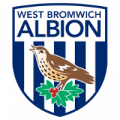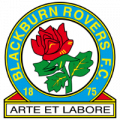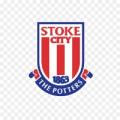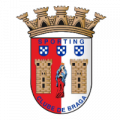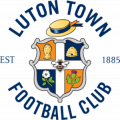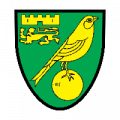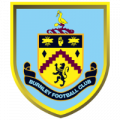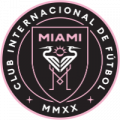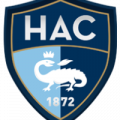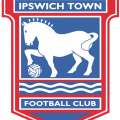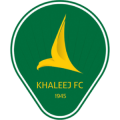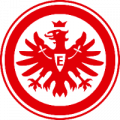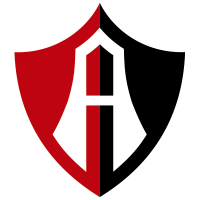
Atlas FC
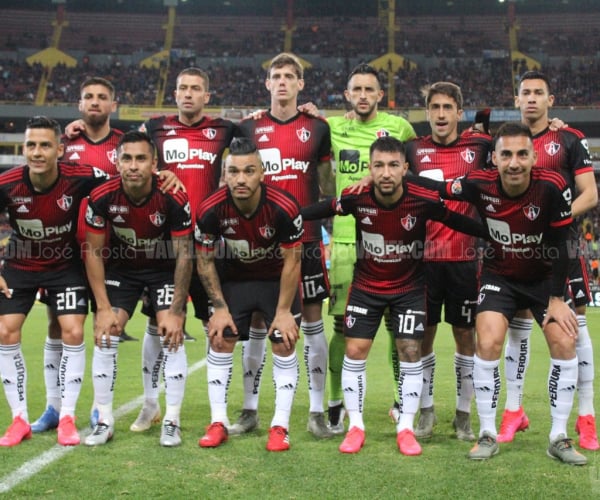
1916 Guadalajara
Atlas Fútbol Club is a Mexican professional soccer team based in Guadalajara, capital of the state of Jalisco. Atlas competes in Liga MX, the highest category of Mexican football. This team is one of the oldest in the country, since it was founded on August 15, 1916.
Imported from Europe
At the end of the 19th century, Mexico was a country in full development and offered unparalleled opportunities to foreign investors, especially those from Europe. In this context, Manuel Cortina, a Spaniard interested in developing his economy in the Aztec nation, settled in the city of Guadalajara, where he had his firstborn son, Juan José Cortina.
Born in Guadalajara, Juan José was sent to study in England at a very young age. Cortina spent much of his childhood and youth there, but what most marked the Mexican during his stay in the old continent was a recently created sport, but quite popular in the United Kingdom: soccer.
Throughout the 12 years he spent in England, Juan José practiced soccer almost religiously. But after the death of his father, the young Cortina returned to Mexico to receive his inheritance and become a landowner. However, what occupied him most was to bring his greatest passion to the land of his birth.
With this in mind, 'Lico', as he was nicknamed, organized several of his friends, who had also returned from England, to hold several meetings at Café Rimans. In these meetings, they talked about creating a soccer club that would practice the sport with the same technique and tactics as in Europe, because, at that time, all the teams in the city and practically in the country played soccer in a very rudimentary and disorganized way.
After several talks, on August 15, 1916, the same Café Rimans witnessed how Juan José and his companions made official the foundation of Club Atlas. About the name, Cortina revealed 20 years later that "It was up to me to baptize it with the name of Atlas, because our enthusiasm was such that we already believed we were the support of the world". The nickname Atlas comes from the legend of a Greek titan of the same name, whose task, according to mythology, was to support the planet Earth.
Lico' Cortina, in addition to being the founder, was the first captain of the red-and-black team and, even after his retirement, he never stopped being linked to the club.
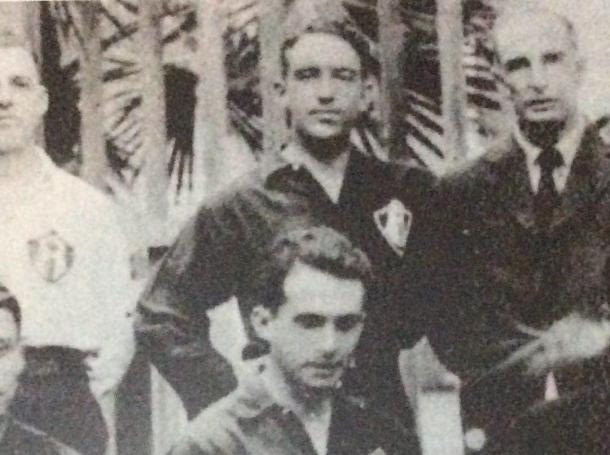
The colors that would forever define the institution were the idea of brothers Ernesto, Tomás and Rafael Orendáin, graduates of Ampleforth College in England. San Lorenzo was the patron saint of that school, and its representative colors are red and black.
A rivalry of more than a century
At the time of the founding of Atlas, there were several amateur teams in the Jalisco capital, so the red-and-black club did not take long to start competing. Having an English school, Juan José Cortina's team quickly became the team to beat in the city, but there was one club with which the clashes were especially exciting: Club Deportivo Guadalajara.
The first recorded match between these two teams took place on January 14, 1917 at the Guadalajara Country Club, within the framework of the General Manuel M. Diéguez Cup. According to the newspaper El Informador, the result of the match was a resounding 18 - 0 in favor of the red and blacks. However, since it is such an old match, most Chivas fans point out that there are no reliable records, so they consider the existence of this match to be a lie.
Be that as it may, that result and the debate generated around it served as the basis for what would become the longest-running rivalry in Mexican soccer to this day: the Clásico Tapatío. It is said that when Atlas and Chivas face each other, the city of Guadalajara splits in two, and this is a phenomenon that dates back more than a hundred years.
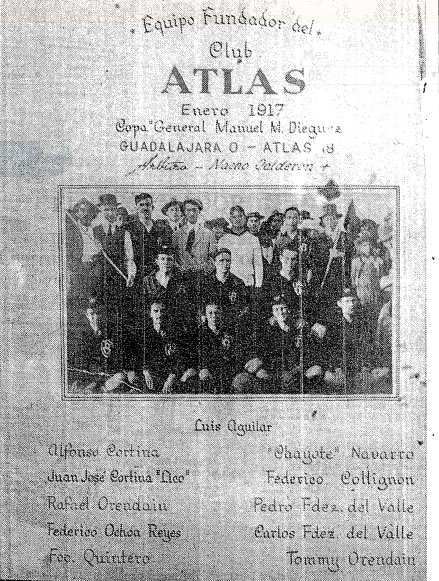
Power in the amateur era
Since its founding, Atlas became the strongest rival in the state of Jalisco for at least the next two decades. Los Rojinegros were unstoppable in the Primera and Segunda Fuerza tournaments, where they won five titles between 1921 and 1929.
Professionalization and the golden era
By the beginning of the 1940s, soccer was already a very popular sport throughout Mexico. Given the desire of soccer players to expand beyond local tournaments, as well as the need to receive better salaries, the first National Professional Soccer League was founded in 1943. As the highest representative of the local soccer at that time, Atlas participated in its first edition.
In its debut as a professional team, on October 17, 1943, the red and black team defeated Club Asturias, one of the most important teams in Mexico City at that time, by a score of 2 - 4.
Atlas soon gained national prominence, and the team became one of the most important of the decade. The first great fruit was harvested in the 1945-46 season, when the team led by Eduardo 'Che' Valdatti became the first club from Guadalajara to be crowned champions of the Mexican Cup.
After eliminating Monterrey, Tampico and América, the Rojinegros faced Atlante in the final of the competition on July 14, 1946, at Parque Asturias in Mexico City. For Atlante, Mateo Nicolau scored two goals, and Martín Vantolrá, one. For Atlas, Norberto Pairoux scored all three goals.
In overtime, the locals took the lead again, but Antonio 'Niño' Flores and Costa Rican Rodrigo Solano were able to consummate another turnaround and put the game to bed. In this way, Atlas lifted its first title as a professional team.
Five days later, the Zorros became the Champion of Champions after defeating the league champions, the Tiburones Rojos de Veracruz, 3 - 2, with goals by Norberto Pairoux, Antonio Flores and Luis Carniglia.
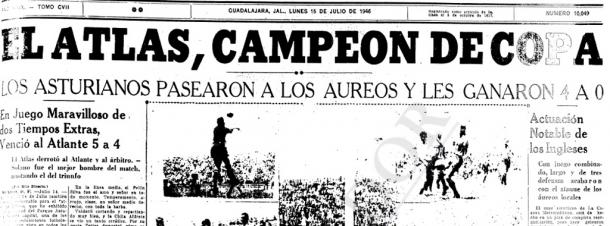
In the following years, Atlas continued to raise its level of play and, by 1950, it was already one of the strongest teams in the country. In the 1949-50 Mexican Cup, the Paradero Team defeated Deportivo Oro, Real Club España and, once again, Tampico on their way to the final of the tournament. In the decisive match, Atlas came up against the Tiburones Rojos, who were motivated after having been crowned league champions.
The final was played on August 6, 1950 at the Ciudad de los Deportes Stadium in Mexico City. Early in the match, Atlas took an early two-goal lead thanks to a brace by José Mercado. Julio Ayllón scored for the Tiburones, but a goal by Edmundo Manzotti made the final score 3-1, giving Atlas their second Cup title.
Atlas and Veracruz met again six days later. This time, what was at stake was the Campeón de Campeones trophy, once again in Mexico City.
With goals from José Novo for the Zorros and Julio Ayllón for the Port side, the match had to go to extra time to determine a winner. It was at that point that Edwin Cubero scored two more goals, once again making the team from Guadalajara the best in Mexico. Cubero did not know it yet, but destiny had in store for him an even more important goal in the red and black jersey.

The first league title
With the great moment that the institution was living, Atlas arrived at the 1950-51 season as the top favorite to win the league title. True to expectations, the Rojinegros accumulated good results, including a 4-0 win over the hated rival, Chivas Rayadas.
The Zorros confirmed that they were one of the best teams in the competition, but their road to the championship was not so easy, as Club León was hot on their heels throughout the campaign. It wasn't until the penultimate matchday that 'Che' Valdatti's team had the opportunity to secure first place overall against none other than Club Deportivo Guadalajara.
A win was enough for Atlas to celebrate their best years in professional soccer, but their opponents were unwilling to concede a definitive victory to their city rivals. The match was hard-fought, and it was not until the 55th minute that Edwin Cubero opened the scoring for the red-and-black team through a penalty kick. The scoreboard did not move any more for the rest of the match, so the 1 - 0 score was enough for the Paradero Team to touch the sky.
Thus, on April 22, 1951, at Oblatos Park in Guadalajara, Atlas became the first league champion from the state of Jalisco. This feat has never been replicated by any other Atlista team, but, at the time, no one could take away the joy of the players and the red-and-black fans.
As a result of their league championship, Atlas earned the right to play the Campeón de Campeones against the winner of the Copa, Atlante. The match, played at the Ciudad de los Deportes Olympic Stadium, ended with a score of 1 - 0 in favor of the Zorros, who won their third title of this kind. The only goal of the match was scored by Edmundo Manzotti.
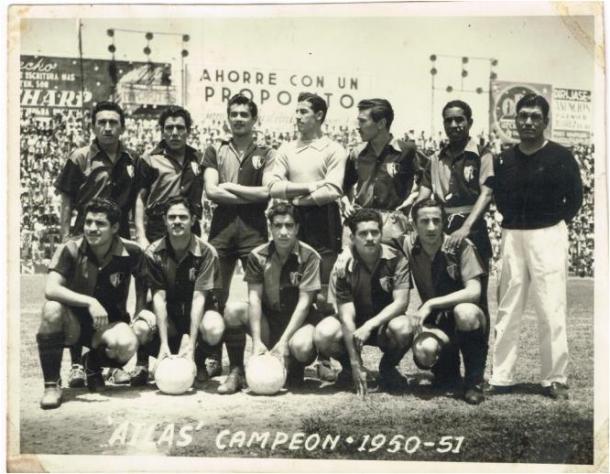
The agony of relegation
Three years after being crowned, Atlas suffered the first relegation in its history in the 1953-54 season. The tragedy was consummated on the last matchday of the tournament, after Los Tapatíos fell by a score of 1 - 0 against Tampico, culminating a tournament in which the club could only score 18 points. The disastrous season came as a surprise, as in previous years the Rojinegros had established themselves as one of the strongest teams in Mexico.
Nonetheless, the "El Equipo del Paradero" returned to the First Division a year later. In the 1954-55 season, Atlas had a total of 39 points and won the championship in the silver division, which guaranteed their return to the top flight of Mexican soccer.
The Academy, the Jalisco Stadium and more cup titles
In those years, soccer was already seen as a profession with a future in Mexico, so more and more people were becoming interested in making a living from the sport. However, the opportunities to become a professional soccer player were very limited, since most of the players were people close to the clubs, foreigners imported to the national game or, in fact, true stars taken from the amateur circuit.
In response to this widespread interest, Atlas founded the first organized soccer school in Mexico in 1958. From that moment until today, the Rojinegro team would become one of the main trainers of soccer players in the country, if not the most important. It is for this fact, and for the great number of stars that have emerged from its basic forces, that Atlas is also known by the nickname of 'the Academy of Mexican Soccer'.
In conjunction with the soccer school, Atlas and, in general, football in Guadalajara were anxious about a new project: the construction of a stadium that could cope with the industrial, economic and social growth of the city of Guadalajara. Thus, at the end of the 1950s, the idea of the Jalisco Stadium was presented as the new home of local soccer.
After a couple of years required for its construction, the Coloso de la Colonia Independencia opened its doors on January 31, 1960. In the inaugural match, Club Atlético San Lorenzo de Almagro from Argentina defeated the Atlista squad 0 - 2, with Norberto Boggio scoring the first goal in the history of this mythical building.
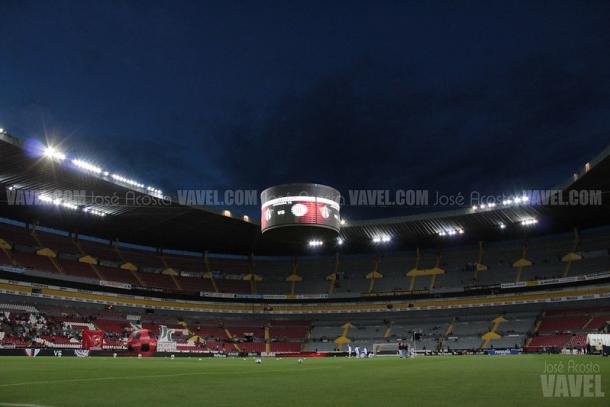
The joint project of the red-and-black entity paid off in a very short term for the "El Paradero" team. The first laurel of the 1960s came from the hand of Brazilian coach José Carlos Bauer, who took Atlas to the final of the Cup tournament in the 1961-62 season.
For the decisive match, the team from Guadalajara faced Tampico at the Estadio Olímpico Universitario in Mexico City. The final score was 3 - 3, so a playoff match had to be played at the same venue. In that match, Atlas won by a score of 1 - 0 and won its third Copa México.
Five days later, an unusual event took place: a Clásico Tapatío in the Campeón de Campeones. Having won the Cup, Atlas had to face Club Deportivo Guadalajara, who had won the league championship in the same season. The match, also played in the country's capital, ended with a 2 - 0 result in favor of the Rojinegros, who, for the second time in their history, won a championship after defeating their fierce rival.
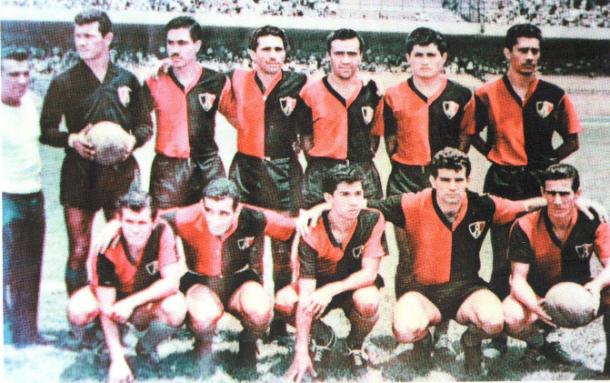
The next championship would come in the 1967-68 season, when the Copa México was already played with a different format that included a group stage. In this round, the Zorros were first place in a sector they shared with Monterrey, Necaxa and León, which allowed them to advance to the semifinals, where they defeated Deportivo Toluca by a score of 2-1.
In the final, the opponent was, once again, the team from Veracruz. On this occasion, the match was played at the Azteca Stadium, Mexico's top soccer stadium.
Los Tiburones Rojos took the lead in the 20th minute thanks to a goal by Mariano Ubiracy. However, the team from Jalisco came from behind in the second half and, with goals from José Rodríguez and José Delgado, turned the score around to win the Cup for the fourth time in its history. This, however, is Atlas' last official title in the First Division to date.
The crisis of the 1970s
The 1970-71 season was another great disaster for the "Team of the Whereabouts". In 34 matches played, the Zorros had a record of 5 wins, 12 draws and 17 defeats, so, with 22 points, they occupied the last position in the championship. Despite this bad tournament, the quotient system gave Atlas the opportunity to stay in the First Division if it won a series against Pachuca.
The first match was played in the state of Hidalgo. During the 90 minutes, there was turbulent soccer and quite violent actions. The red-and-black team took the lead on a couple of occasions, but on both occasions they were overtaken by the locals, so the first leg ended 2 - 2.
Apparently, everything was going to be defined at the Jalisco Stadium, where the stands were full of people supporting the team from Guadalajara. Despite the locality, it seemed that Atlas would be relegated that same afternoon, but a goal by Magdaleno Mercado put the final score at 1-1, leaving the series without a winner after 180 minutes.
As the series was tied, relegation had to be defined in a third match, played in the city of León, Guanajuato. In that match, Atlas was superior to Los Tuzos, but, despite their better soccer, Los Rojinegros could not find the opponent's goal, unlike Pachuca who, with goals from José Madrigal and Cesáreo Acosta, sent Árpád Fekete's Atlas to the Second Division.
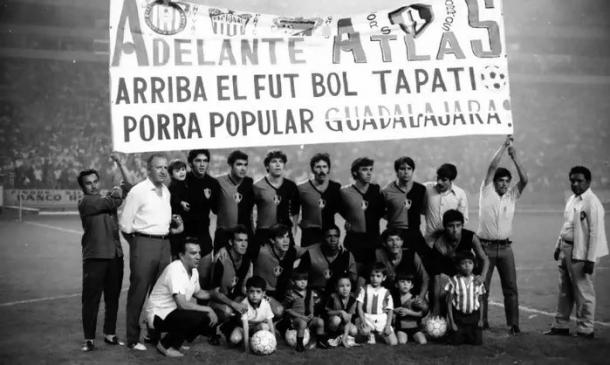
The Rojinegros achieved promotion the following year, after a great tournament in Second Division in which they scored 53 points in the regular phase. Subsequently, in the semifinals, they eliminated Club Deportivo Zamora 6 - 2 on aggregate and, in the final, they beat Tigres of the Universidad Autónoma de Nuevo León 4 - 0 at the Azteca Stadium.
On their return to the maximum circuit, in the 1972-73 season, Atlas surprised with an impressive year in which, with 44 points, they finished second in their group and third overall, only behind Cruz Azul and León. The Rojinegro's good performances allowed them to reach the semifinals, where they were eliminated 4-2 on aggregate by the Cementera Machine, who would eventually be crowned champions of the tournament.
Of this Atlista generation, it is noteworthy that the first team was essentially made up of players from their basic forces. Led by Alfredo 'Pistache' Torres, players such as Ricardo 'Astroboy' Chavarín, Bernardino García and José Luis 'Pillo' Herrera, developed such a colorful and offensive game that they earned the team the nickname of 'Los Amigos del Balón' (The Friends of the Ball).
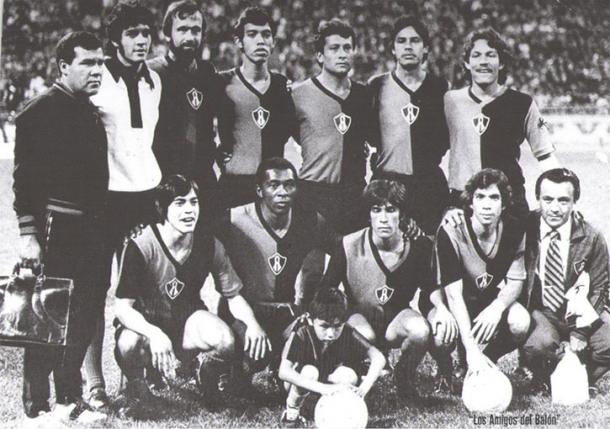
However, this tournament would be the only good one for Atlas in many years. In the 1977-78 season, the Rojinegros finished second to last in the general table with 28 points. In the playoff for non-relegation, Los Tapatíos faced the worst team in the championship, Unión de Curtidores. Despite being the favorites to stay in the First Division, the Zorros were unable to beat the team from Guanajuato, which, by a score of 4-2, sent Atlas back to hell.
Once again, the Rojinegro returned to the maximum circuit a year later, as a result of a season in which, with 66 points, they were the best team in the regular phase. Later, in the final for promotion, the team defeated Club Deportivo Cuautla 3-2 on aggregate. Unfortunately for Atlas, this would be the last good news they would receive for a long time.
The Academy did not lose the category again, but their stay in the First Division was not what their fans expected. In those years, the team added several negative records, such as nine consecutive defeats and 1,075 minutes without scoring a goal, both in the 1980-81 season. In addition, Los Tapatíos went 11 years without qualifying for the Liguilla, from 1973-74 to 1983-84. However, the following decade would bring better years for the Amigos del Balón.
Marcelo Bielsa, Ricardo La Volpe and the Hero Kids
With the aim of changing the face of the team, in 1992 the Atlista board hired the Argentine Marcelo Bielsa, a young man who, in his first two years as coach, had managed to give Club Atlético Newell's Old Boys a pair of Argentine First Division championships, in the 1990-91 season and in the 1992 Clausura tournament.
A fundamental task during his time in the red and black dugout was to strengthen the team's basic forces. Throughout his tenure, scouting sessions were held throughout Mexico, with the mission of attracting young talent that could be trained as professionals in the Academy's lower divisions.
In the debut season of their new coach, Atlas had a regular year in which they finished in third place in their group and failed to qualify for the Liguilla. For the 1993-94 campaign, the Rojinegros reached the final phase after an eight-year absence, but were eliminated in the quarterfinals by Club Santos Laguna.
The Argentinean coach left to coach Club América in 1995, but his legacy remained in Atlético's youth academy. During the next couple of years, some Liguillas were reached, although this was a transition period for the Zorros, until, in 1997, they found the ideal replacement for 'Loco' Bielsa.
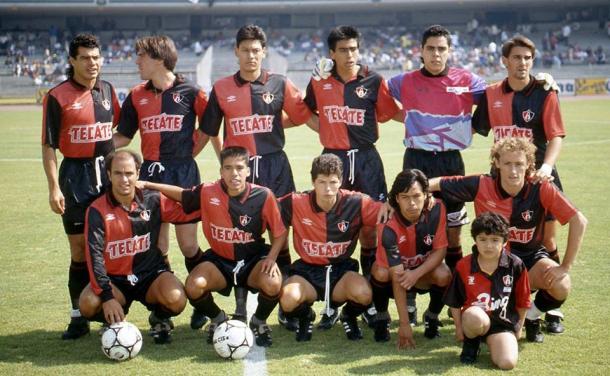
With a view to the 97 Invierno tournament, Atlas hired the experienced Ricardo Antonio La Volpe, an old acquaintance of Mexican soccer, whose last team had been America. Since those years, La Volpe's taste for giving young players a chance was already well known, so the work done by Marcelo Bielsa in the basic forces gave him a lot of material to work with.
In his first season with the team from Guadalajara, the Argentinean was able to qualify his team to the Liguilla for the title. Atlas, which entered this phase in seventh place, was eliminated 5-1 on aggregate in the quarterfinals by the team that would end up being champion: Luis Fernando Tena's Cruz Azul.
For the Summer 98 championship, the Zorros once again had a splendid campaign with La Volpe at the helm. The team from the Paradero had 30 points and was in fourth place in the general table. In the final phase, Atlas eliminated the Tecos of the Autonomous University of Guadalajara, but lost to Necaxa 3-2 on aggregate in the semifinals.
In the following tournament, Los Tapatíos finished the regular phase in seventh place and, in the quarterfinals, defeated Enrique Meza's powerful Toluca. Despite having eliminated one of the best teams in the country at that time, the Amigos del Balón lost again to Necaxa in the same stage and by the same score as six months earlier. Had they won this semi-final, La Volpe's team would have played against their biggest rivals, Chivas Guadalajara, for the title.
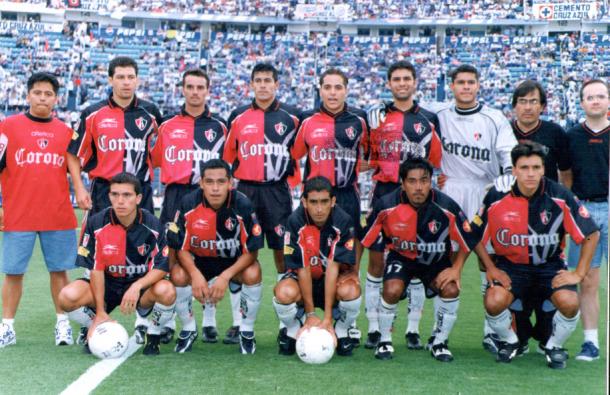
By the Summer '99 tournament, the Academia del Fútbol Mexicano had already acquired some great players from its youth ranks. Men like Erubey Cabuto, Rafael Márquez, Julio 'Jerry' Estrada, Héctor López, Juan Pablo 'Chato' Rodríguez, César Andrade, Miguel Zepeda and Daniel Osorno, accompanied by reinforcements of the caliber of Pablo Lavallén, Jorge Almirón and Hugo 'Misionero' Castillo, gave Atlas a record of 10 wins, 4 draws and only 3 defeats to total 34 points and place second overall, more than enough to advance to the Liguilla.
In the quarterfinal stage, the team defeated Monarcas Morelia by an aggregate score of 4 - 3. Then, in the semifinals, the Rojinegro overcame Cruz Azul, winning 4 - 0 in Mexico City with goals from Andrade, Zepeda, Rodríguez and Castillo. In the second leg, the 'Chato' and the 'Misionero' scored again to round off a resounding 6 - 0 aggregate score.
With this good performance, Atlas reached its first League final to face the Diablos Rojos del Toluca, coached by Enrique Meza and led by the individual goal-scoring champion of that campaign, Paraguayan José Saturnino Cardozo. The mission was far from simple, but, at that point, the Zorros felt prepared for anything.
The first leg was played on June 3, 1999 at the Jalisco Stadium. It looked as if the tie was headed in the right direction from very early on, when goals from Carlos María Morales in the 2nd minute and Cardozo in the 8th minute put the visitors in front. César Andrade brought the Rojinegros closer at minute 20, but seven minutes later, Morales widened the gap once again. The second half, however, belonged entirely to the locals, who, with goals from Hugo Castillo at 54' and 'Rafa' Márquez at 69', tied the match at three goals apiece, so that everything would be decided in the second leg.
As a backdrop to the final match, the Nemesio Diez Stadium was dressed to the nines to see a Toluca team that, at the time, looked favored to lift the trophy. However, despite playing as visitors, the young Atlistas came out to give their all from the very first minute, when 'Misionero' Castillo gave his team the lead. However, the joy was short-lived, as Saturnino Cardozo equalized just two minutes later.
Still in the first half, when both teams were playing quite offensive soccer, Alberto Macías turned the game around at minute 26, giving the Choricero team a partial lead. However, just after halftime, Miguel Zepeda scored, at minute 50', the 2 - 2 on the scoreboard, which would not move neither in the regular 90 minutes nor in extra time. Thus, with the aggregate score at 5 - 5 and in a final that, even today, is remembered as one of the best in the history of Mexican soccer, everything would be decided in a penalty shootout.
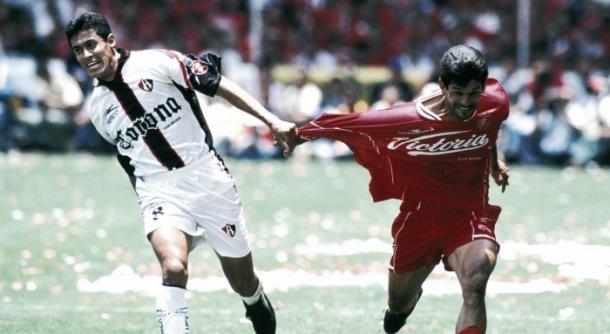
From eleven penalty kicks, Antonio Taboada and Víctor Ruiz scored the first two for Toluca, while Juan Pablo Rodríguez and Miguel Zepeda scored for Atlas. Erubey Cabuto saved the home side's third penalty, taken by Fabián Estay, so that Daniel Osorno had the chance to put La Academia ahead, but his shot hit the crossbar.
Darko Vukić and José Saturnino Cardozo scored, respectively, the Devils' fourth and fifth penalties. This was well answered by Rafael Márquez and Eduardo Bustos, so the champion would have to be defined in sudden death.
Opening this new shootout, Salvador Carmona once again put the home team ahead, leaving Julio Estrada with the responsibility of keeping the Jalisco team alive. Jerry' took his shot to the right post, but the ball was saved by Hernán Cristante, thus giving Deportivo Toluca its fifth league title to date.
Despite having fallen in the last instance, the great tournament of the Rojinegros did not go unnoticed by anyone, especially if we take into account that almost the entire squad was made up of youngsters who had just come out of the youth academy. This fact meant that the Atlista generation that reached the Summer 99 final was known as 'the Hero Kids'.
Rafael Márquez, who, after playing in the final against Toluca, went to France to play for AS Monaco, a team with which he won the Ligue 1 and the French Super Cup in his first year. Later, the 'Kaiser of Zamora' joined FC Barcelona, with which he won four Spanish Leagues, one Copa del Rey, three Spanish Super Cups, two UEFA Champions Leagues, one European Super Cup and one Club World Cup. Márquez would return to Atlas in 2016, and retired with this team in 2018.
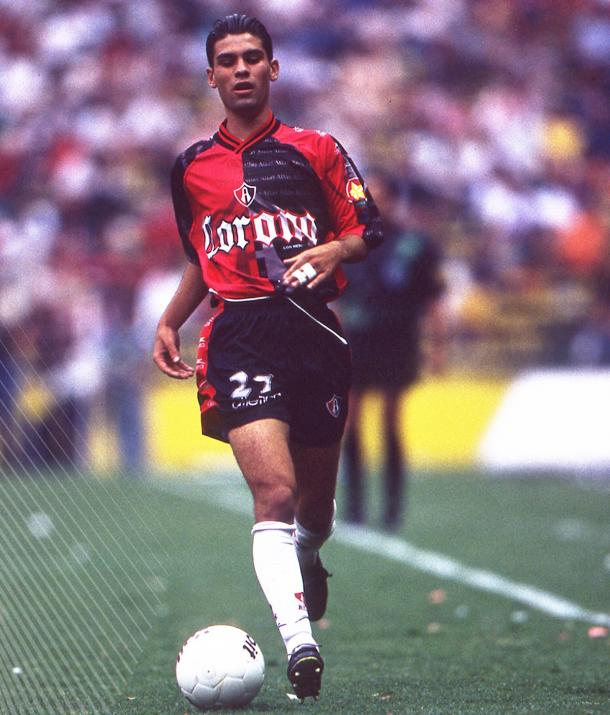
In the following championship, Invierno 99, Atlas had its best regular season in the history of short tournaments. The Zorros had a record of 11 wins, 5 draws and only 1 loss, which allowed them to reach 38 points and position themselves at the top of the table.
The quarter-final phase arrived, in which La Volpe's team defeated the Tecos 4-3 on aggregate. The opponent in the semifinals was Javier Aguirre's Pachuca, a team that had qualified for the Liguilla via playoffs after eliminating Morelia and that, in the quarter-finals, defeated the champion Diablos Rojos.
Atlas looked like overwhelming favorites in the playoffs, but the Tuzos surprised in the first leg by winning 0 - 2 with goals from their star player, Pablo Hernán Gómez. The second leg was played at the Jalisco Stadium and, although the Academy won that match, the lone goal by 'Misionero' Castillo was not enough to turn the aggregate score around. Thus, the Rojinegros were eliminated by a Pachuca team that would end up winning the final against Cruz Azul and obtaining their first league championship.
The 2000 Libertadores
Atlas' great performance in Winter 99 earned them an invitation to the Pre Libertadores Cup, where they played a quadrangular with Club América and the Venezuelan clubs Deportivo Italchacao and Deportivo Táchira. The Zorros finished this phase in first place and, together with the team from the Mexican capital, reached the Copa Libertadores for the first time in their history.
The Amigos del Balón were drawn in a difficult group 4, which they shared with Club Atlético River Plate (Argentina), Universidad de Chile (Chile) and Atlético Nacional (Colombia). Despite the complexity of their opponents, Atlas finished the first phase with two wins, two draws, two defeats and a total of 8 points, which gave them a place in the knockout round as second place in their group.
In the round of 16, the Academy was paired with Club Deportivo Popular Junior from Barranquilla, Colombia. In the first leg, the Zorros won 2 - 0 with a pair of goals by Juan Pablo Rodríguez at 77' and 81'. In the second leg, in Colombia, Atlas was able to overcome Junior by a score of 1-3, with goals by 'Chato' himself, Daniel Osorno and Ailton Da Silva. José Herrera was in charge of scoring for the locals.
After advancing from the first round with a 5-1 aggregate score, Ricardo La Volpe's men were motivated to reach the quarterfinals, where they had to face Brazil's Palmeiras. The Amazonians asserted their role as favorites and, with wins of 0 - 2 at the Jalisco and 3 - 2 at the Palestra Itália Stadium, advanced to the semifinals. Atlas' liberating adventure ended in the quarterfinals, but the Rojinegros and, in general, Mexican soccer left a good taste in South America, as, in that edition, América came very close to eliminating Boca Juniors in the semifinal round.
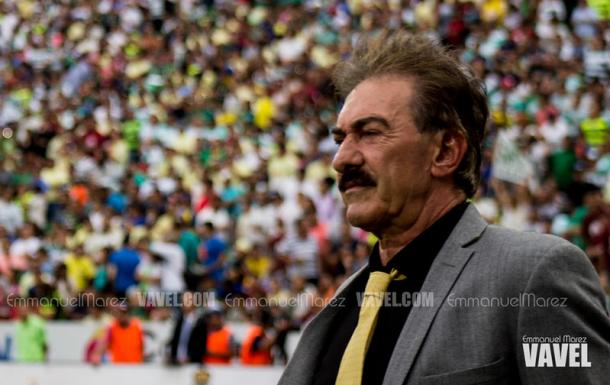
The new millennium
Time went by and the great generation of red-and-black players began to fade. After a Summer 2001 in which the team failed to qualify for the Liguilla, La Volpe left the Atlas bench to coach Deportivo Toluca. The team also failed to reach the next round in the Winter tournament. They did so in Summer 2002, but in the quarterfinals, a three-goal aggregate draw against Santos Laguna gave the team from Torreón a place in the semifinals thanks to the criteria of position in the table.
Atlas remained outside the qualification zone in the Winter tournament, but, for the 2003 Clausura, they managed to enter the Liguilla as sixth place in the table. However, the red-and-black adventure would end very quickly, as they were eliminated 5-4 on aggregate by Rayados de Monterrey in the quarterfinals. The Academy would qualify for the Liguilla again a year later, but were knocked out in the same phase by Pumas de la UNAM, the team that would end up lifting the Clausura 2004 trophy.
For the 2004 Apertura, the Atlista institution, directed by Sergio Bueno, put together a solid team that filled their fans with hope. With Robert De Pinho and Carlos María Morales as their most important men, the Zorros had a good tournament in which they scored 37 points and were the fourth best team in the League. With 12 goals, De Pinho was the tournament's runner-up scorer, trailing only Guillermo Franco and his 15 goals.
Atlas could not have asked for a better opponent in the quarterfinals: Chivas Rayadas del Guadalajara. In the first leg, the Rojinegros won by the narrowest of margins thanks to a goal from Juan Manuel García. During the second leg, with two goals from Robert De Pinho and one from Juan Pablo García, the Zorros had a comfortable 3-0 lead at halftime. However, the Rebaño got the equalizer after a goal from Alberto Medina and two more from Miguel Sabah.
Despite the scare, the overall score of 4 - 3 allowed the Amigos del Balón to qualify for the semifinals. Their opponent in this stage would be Pumas, coached by Hugo Sánchez. The team from the capital finished the championship in ninth place, but the group format in which the First Division was played at that time allowed them to reach the Playoffs and eliminate the super leader Veracruz in the quarterfinals.
The first leg at the Estadio Olímpico Universitario ended in a thrilling 4-3 win for the home side. The defeat, however, was not a cause for concern for the locals, as they would receive the second leg at home and with the advantage of having scored three goals on their own turf.
However, the felines surprised by taking a 0 - 2 lead at the Jalisco Stadium. De Pinho scored for Atlas in the 86th minute, but the 6 - 4 aggregate score was irretrievable for the Zorros, who were eliminated by Pumas. That same season, the university team became the first two-time champion of Mexican soccer since the short tournament format was adopted.
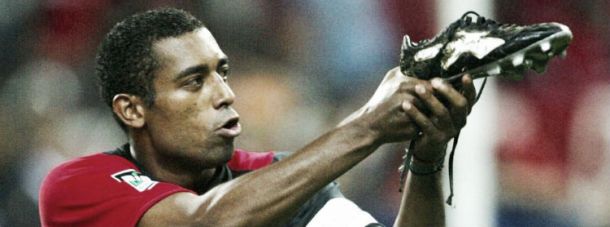
New adventure in South America
After the good performance in the 2004 Apertura, Atlas accumulated several tournaments in which they did not have outstanding participations. The Rojinegros managed to qualify for the Liguilla in the Apertura 2006 and Clausura 2007, being eliminated on both occasions by Club América in the quarterfinal round. But, beyond these two occasions, Atlas did not reach the final phase again until the 2013 Clausura and, in this period, finished in last place overall on three occasions (2005 Clausura, 2007 Apertura and 2010 Apertura).
Even so, the Atlista club found an oasis in 2008, when the Mexican Soccer Federation organized a tournament called InterLiga, which was played in the United States and granted one and a half tickets for the next edition of the Copa Libertadores. In that competition, Atlas played against San Luis FC in one of the two finals of the tournament, which it won by a score of 3 - 0 with a goal by Bruno Marioni and two more by Jorge Achucarro. As the second best of the two winners of the InterLiga, the Jalisco institution earned a place in the playoffs prior to the continental competition.
In the playoffs, the red-and-black team defeated La Paz FC of Bolivia 2-1 on aggregate, which was enough to qualify for the group stage of the Copa Libertadores. Atlas shared sector 3 with Boca Juniors (Argentina), Colo-Colo (Chile) and Unión de Maracaibo (Venezuela).
Throughout this round, the Mexican team surprised everyone with 11 points, the result of three wins, two draws and only one defeat. This figure helped Atlas to take first place in its group and qualify for the knockout phase.
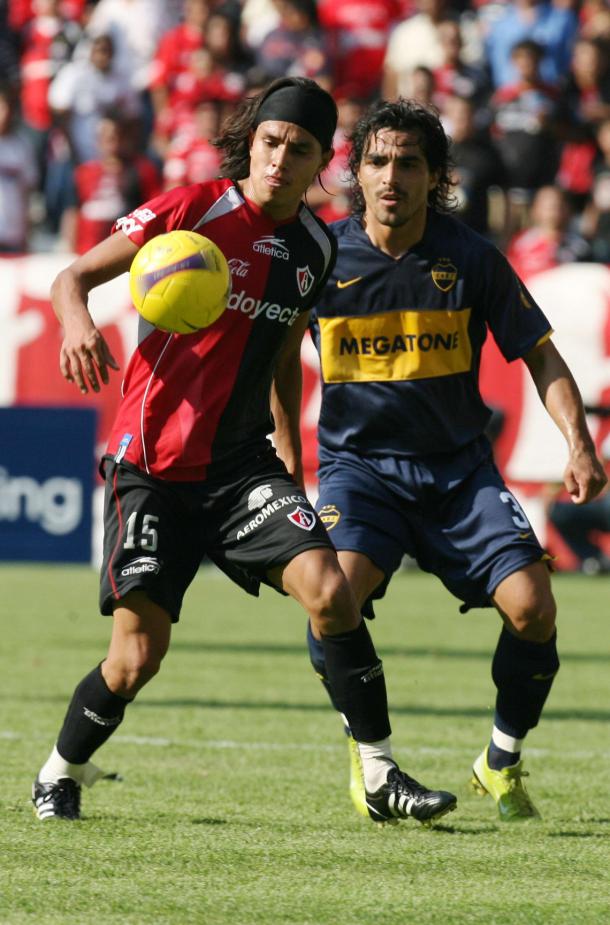
In the round of 16, the Academy faced Club Atlético Lanús from Argentina. The result of the first leg, played at the Estadio Ciudad de Lanús, favored the Zorros thanks to a solitary goal by Bruno Marioni. In the second leg, the 'Barullo' once again gave Los Tapatíos the lead, but the Argentinean club equalized through José Sand. Later, Ulises Mendívil gave the home team the lead back and, despite the goal scored by Lautaro Acosta at minute 91, Miguel Ángel Brindisi's team advanced to the next round with a 3-2 aggregate score.
For the quarterfinals, Atlas would face one of the teams with which it shared a group: Boca Juniors. Curiously, the first leg was not played at Boca's stadium, but at the José Amalfitani Stadium, home of Vélez Sarsfield.
El Rojinegro took an early lead in the first leg thanks to a header by Omar Flores in the 6th minute. But, half an hour later, an own goal by Hugo Ayala gave the home team the equalizer, which they would turn it around at minute 75 through Julio César Cáceres. It looked as if the Zorros were going to lose the first battle, but, with a minute to go, Jorge Torres Nilo tied the score.
With the draw and two away goals, Atlas seemed to be on their way to the Libertadores semifinals. However, the team from Buenos Aires showed all its history at the Jalisco Stadium, and an unstoppable Martín Palermo scored, at 19', 33' and 37', the three goals that put the aggregate score at 5 - 2 and put the team from Guadalajara out of the quarterfinals once again.
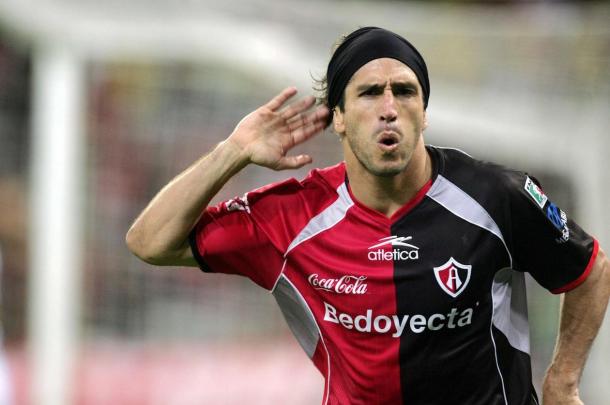
The arrival of Grupo Salinas
After six years of absence, the red-and-black team once again qualified for the Liguilla for the title in the Clausura 2013 tournament, when it was coached by Tomás Boy. In this championship, Atlas had a great regular season in which, with a record of nine wins, five draws and three defeats, they accumulated 32 points and occupied third place in the table.
In the quarterfinals, the Paradero Team faced Santos Laguna and achieved a goalless draw in Torreón. However, in the second leg, the Laguneros turned around a match in which Omar Bravo had given the Zorros the lead. Thus, with the score 1 - 3 against, the 'Jefe's' squad once again fell short of the semifinals.
For the Apertura, Atlas had only one win, nine draws and seven defeats, which confined them to fifteenth place, far from any possibility of qualifying for the next round. But the good news for the red-and-black fans came in November, when the purchase of the team by Grupo Salinas became official.
The investment of the new owners was noticeable in the 2014 Apertura, a tournament in which Atlas scored 31 points and took third place. Their opponent in the quarterfinals was Rayados, and the Rojinegros were able to defeat them 0 - 1 with a goal by Luis Neri Caballero in the city of Monterrey. However, in the second leg, the Monterrey side turned the tie around with goals from Dorlan Pabón and Cándido Ramírez, once again leaving the Academy on the verge of another semi-final.
The good performance in the Apertura earned Atlas direct qualification to the group stage of the 2015 Copa Libertadores. Boy's team shared a section with Independiente de Santa Fe (Colombia), Atlético Mineiro (Brazil) and Colo-Colo (Chile). Los Rojinegros only managed to win two matches in exchange for four defeats, thus signing their worst participation in the continental competition, finishing last in their group.
In the following national tournament, the Zorros again qualified for the 'Fiesta Grande' by taking fourth place. The opponent to beat in the quarterfinals was Deportivo Guadalajara, with whom they drew 0 - 0 in the first leg. However, in the second match, a hat-trick by Marco Fabián and a goal by Omar Bravo once again sentenced Atlas, for whom Juan Carlos Medina scored.
That match is remembered for an unfortunate event, since, in the final minutes, when his team was already losing 1 - 4, a part of Barra 51 invaded the field to scold the players and coaching staff. This event culminated in the arrest of some of these fans by the authorities in Guadalajara.
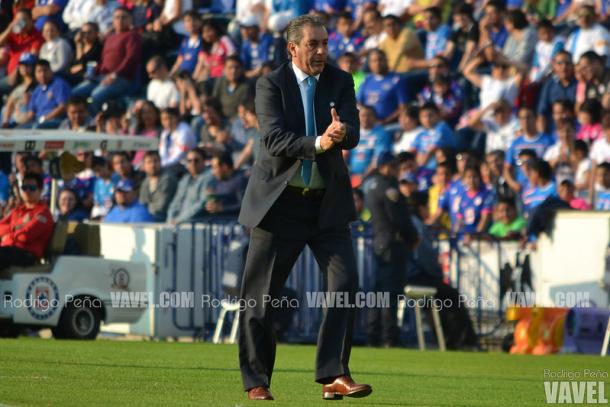
Atlas had a couple of bad tournaments in the Apertura 2015 and Clausura 2016, so the board decided to hire José Guadalupe Cruz. In his first tournament, the 'Profe' did not obtain the expected results, as the team only harvested 19 points and was ranked 15th.
Qualification came again in the 2017 Clausura, when Cruz's team occupied sixth place thanks to the 26 points it earned. In this tournament, the top rival, Chivas, finished the first phase in third place, so, once again, there was a Clásico Tapatío in the quarterfinals.
The Zorros won the first leg thanks to a goal scored by Matías Alustiza from the penalty spot. The second leg was played at the Akron Stadium, home of the red and white team, where, after 45 minutes, Orbelín Pineda scored the equalizer. The team coached by 'Profe' Cruz was unable to score again, so that, based on the criteria of position in the table, Guadalajara eliminated Atlas again in the first elimination round. To make matters worse, in that tournament, the red-and-black fans had to endure seeing their fierce rivals crowned champions of Mexican soccer.
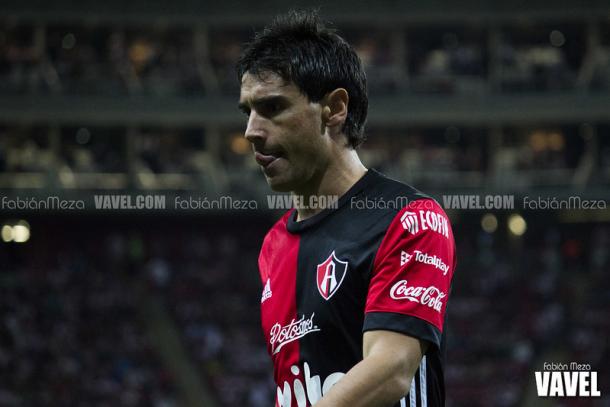
In the Apertura tournament, Atlas scored 25 points and was positioned in eighth place, enough to be in the Liguilla zone. However, the result was the same for the club from Guadalajara, as, in the quarterfinals, they lost to super leader Monterrey 6-2 on aggregate.
After the dismissal of José Guadalupe Cruz, the red-and-black club has hired several coaches such as Ángel Guillermo Hoyos, Leandro Cufré and Rafael Puente del Río. Despite several coaching changes, the club has not been able to find a formula that will take them back to the Liguilla.
Grupo Orlegi: Atlas' new era
After six years as owner, in which it was unable to turn the Academy into a contending team, Grupo Salinas decided to put the team from Jalisco up for sale. Grupo Orlegi, owner of Club Santos Laguna in the First Division and Tampico Madero FC in the Liga de Ascenso, answered the call.
With this new project, Orlegi Sports' main objective is to turn Atlas back into an important team in the national scene. Despite the fact that the first tournaments have not yielded significant results, the Atlista fans have faith in Alejandro Irarragorri's group to return the Mexican Soccer Academy to its old glories.
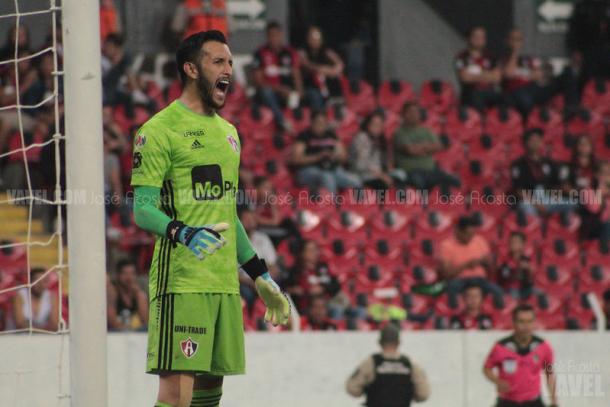
Currently, Atlas has reaped its best fruits in the basic forces, since the Academy, in addition to exporting high quality players, has won several tournaments in the various lower categories of the national football. In addition, the Rojinegras are one of the most important teams in the Liga MX Femenil, where, although they have not been able to win any titles, they are always considered as one of the rivals to beat.
This biography was written by Rodrigo Íñiguez.




